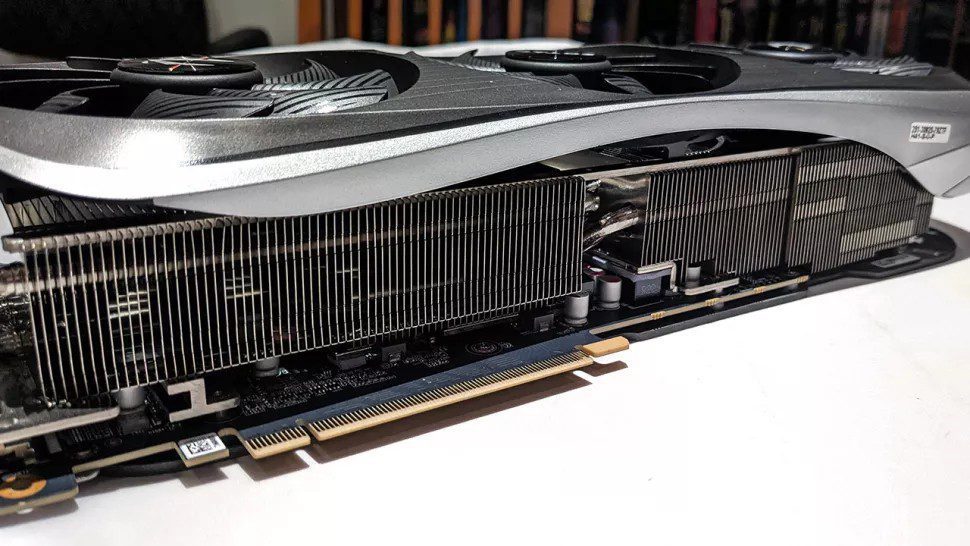ZOTAC GEFORCE RTX 4080 AMP EXTREME AIRO
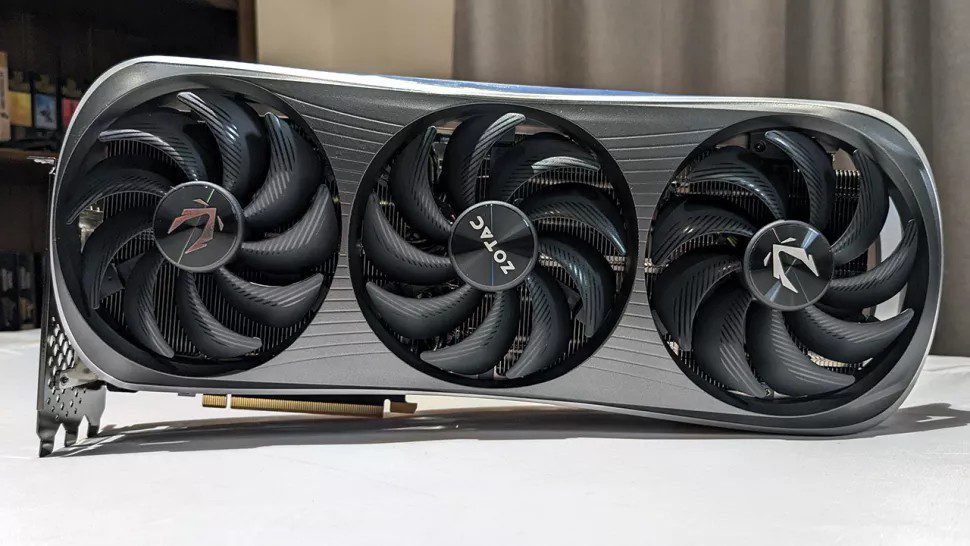
FOR
- High out-of-the-box boost clock
- Mega cooling capability
- Great looks
- Good build quality
AGAINST
- Too expensive – like all 4080s
- It’s very big
- Not loud, but not a silent card either
Why you can trust PC Gamer Our expert reviewers spend hours testing and comparing products and services so you can choose the best for you. Find out more about how we test.
If you read our review of the Nvidia GeForce RTX 4080 Founders Edition(opens in new tab), our conclusion was that it’s an excellent graphics card marred by an excessive price. The FE’s $1,200 / £1,269 / AU$2,219 price is simply beyond the range of mainstream gamers, and that’s before considering the premium tier partner cards that cost even more. Consoles look appealing to many.
But now that the Radeon RX 7900 XT(opens in new tab) and RX 7900 XTX(opens in new tab) have launched, hopefully those prices are set to trend downwards. Probably not by a lot, but at least they’re heading in the right direction. Thank god miners aren’t competing this time around.
The Zotac GeForce RTX 4080 Amp Extreme Airo is a long name for a big (and curvy!) card. It aims to beat out the Founders Edition in every aspect, purporting to be faster, quieter, cooler, and more feature rich than the FE. At $1,399 / £1,319 / AU$2,349 it’s a step up in price—though unusually that’s most apparent in the USA—costing $199 more than the launch price of the FE. In the UK and Australia, the pricing of the Zotac is more fair at £50 or AU$130 more than the FE.
The Zotac Airo, like all other RTX 4080s, is built around the 4nm AD103 GPU, which has 9,728 out of a possible 10,240 cores available. That leaves room for Nvidia to release an RTX 4080 Ti in the future. The AD103 gets a huge increase in L2 cache size, at 64MB vs the 5MB of the RTX 3080(opens in new tab). Add to that much improved ray tracing support, the impressive DLSS 3, and a more than reasonable 320W TDP, and spec wise the RTX 4080 looks very strong.
Other key specs include 16GB of 22.4Gbps GDDR6X memory over a 256-bit bus. That’s a step back from the RTX 3080, but then look at the die size of the 4080, at 379 mm² vs the huge 628 mm² of the 3080 and the other GA102 cards. For sure Nvidia is making good money off of the RTX 4080! And when it comes to performance per watt, the RTX 4080 is in a league of its own.
The Zotac Amp Extreme Airo is for now, Zotac’s top 4080 card, sitting above the Trinity. It comes with a boost clock of 2,565MHz. Officially, that doesn’t seem like much of an overclock over the FE’s 2,505MHz. Some top tier cards ship with 2,600MHz+ overclocks, but rated boost clocks mean little and you shouldn’t worry about that. In my testing the Zotac was able to reach above 2,800MHz under default operation.
Many manufacturers have repurposed their 450W+ rated RTX 3090 Ti(opens in new tab) or RTX 4090(opens in new tab) coolers for use with the RTX 4080, and it shows after taking one look at it. It’s a big 3.5 slot card. The fan shroud features an unusually curved design too. It incorporates attention grabbing RGB lighting along the length of the card, which can be controlled via Zotac’s Spectra RGB app.
It’s got a full cover metal backplate with another branded RGB element and, personally, I think it’s a great looking card.
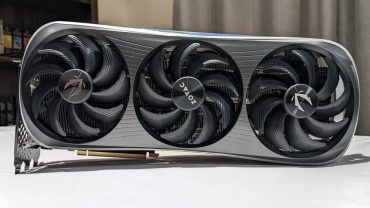
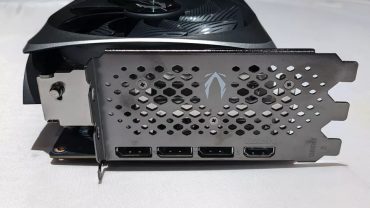
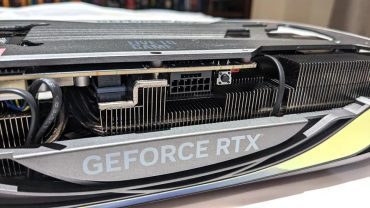
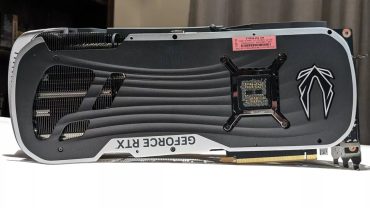
Like all RTX 4080s, the card comes with a 12+4 pin 12VHPWR connector. In this case it has a 3x 8-pin adapter, delivering up to 450W. That’s more than enough juice to power the 320W Airo. With 320W, you wouldn’t think Zotac needed an extreme PCB, but in a sign that it’s built for a higher TDP, the card features a 24-phase VRM with a further three for the memory. Notably, the memory is rated for 24Gbps, more than the card’s 22.4Gbps. So you should have some OC headroom on tap.
Other key features include an RGB header for controlling an external strip and dual BIOS with performance and quiet modes. A quick test didn’t reveal any difference, and given the overspec cooler, leaving it at the performance setting is recommended. Unusually, it’s controlled by a button rather than a switch, with the change applied after a reboot.


The cooler is more of a traditional design, eschewing the use of a vapor chamber in favor of a traditional nine-heatpipe baseplate. As expected with such a behemoth of a cooler, the heat generated by the AD103 GPU presents absolutely no problem. A peak temperature of just 62°C is excellent, while full system power consumption is also good, coming in below the previous generation high end cards.
The Zotac uses a little under 20W more power than the Founders Edition, but when you factor in all the RGB and an extra fan, that’s fine.
But the raw wattage number doesn’t tell the true story. As the RTX 4080 dramatically outperforms the likes of the RTX 3080 Ti with less power; it’s the performance per watt that really stands out. Well done Nvidia!
Synthetic gaming performance



1440p Gaming Performance






The RTX 4080 delivers very good performance, and the Zotac Amp Extreme Airo is a little better than the FE, though not dramatically so given the loosely defined way Nvidia cards boost themselves.
Most of the games that struggled to break 60Hz at 4K can now do so, even with ray tracing effects enabled, and that’s before enabling DLSS. Even in the most demanding titles, 1440p at high refresh rates at the highest settings is possible.
Despite its gigantic size, however, the Zotac card isn’t what you’d call silent, though it’s no leaf blower either. Under heavy gaming loads the card is audible, but in no way annoying in tone or volume.
There is the threat of the Radeon RX 7900 XTX(opens in new tab) too. If you look at our launch day review, you can see it’s a decent enough competitor, though it can’t match the RTX 4080 in ray traced games. If that’s unimportant to you, the XTX is well worth a look. The XT is neither here nor there and isn’t a threat to the RTX 4080 apart from its lower price.
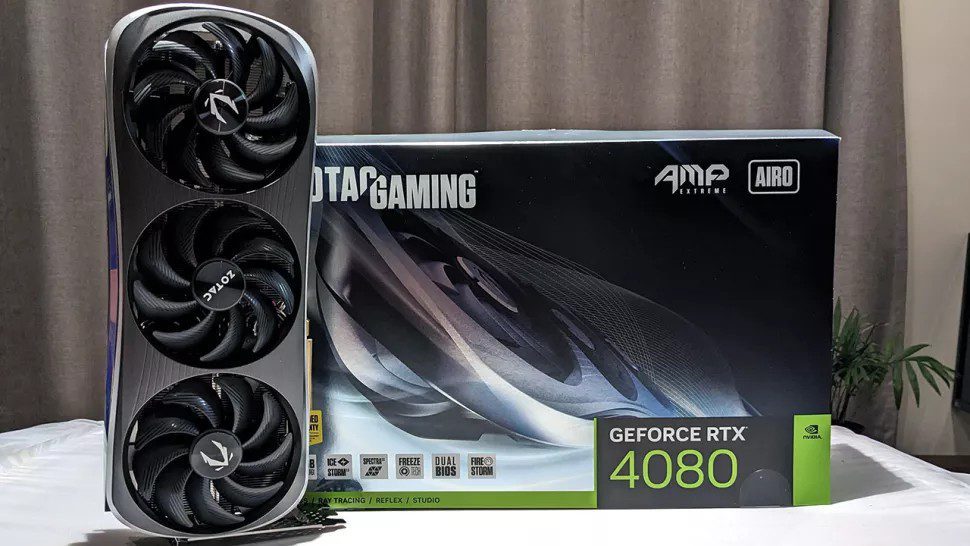
Zotac’s RTX 4080 Amp Extreme Airo is a genuine high-end contender. I believe it’s a very good-looking card, particularly if you’re a fan of RGB lighting. Its curved shroud might not appeal to all, but to me it’s a nice change from otherwise boxy designs.
My sample clocked itself to the highest level I’ve seen from the three RTX 4080s I’ve tested to date. It stays cool at all times—as expected given its gargantuan cooler. It’s only issue, if you can call it that, is a noticeable fan level, which is really unnecessary when you’re dealing with peak temperatures in the low 60s. It’s definitely not noisy though.
At $1,399| £1,319 | AU$2,349, the card goes up against premium tier competitors such as the MSI Suprim and Gigabyte Aorus. In my experience so far, the MSI has its nose in front by a whisker, but in the end it all comes down to price.
The Zotac RTX 4080 Amp Extreme Airo is a fast card, very well built, it looks great and it will deliver excellent performance on top of the quality Nvidia feature set. But it needs some extra value on top too, though the same can be said of all RTX 4080s and all high-end cards in fact. Whether it’s an RTX 4080, RTX 4090 or RX 7900 XT/X, the prices are tough to swallow right now. Let’s hope 2023 brings some better news on that front.

